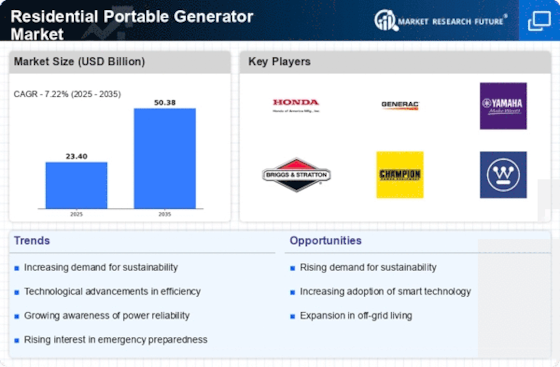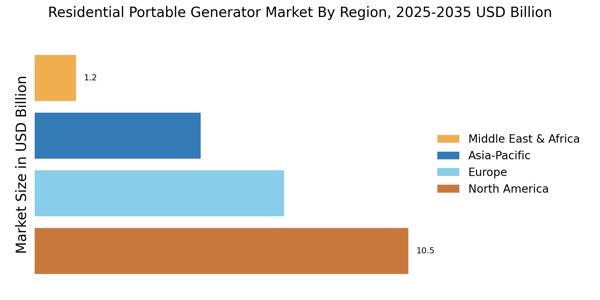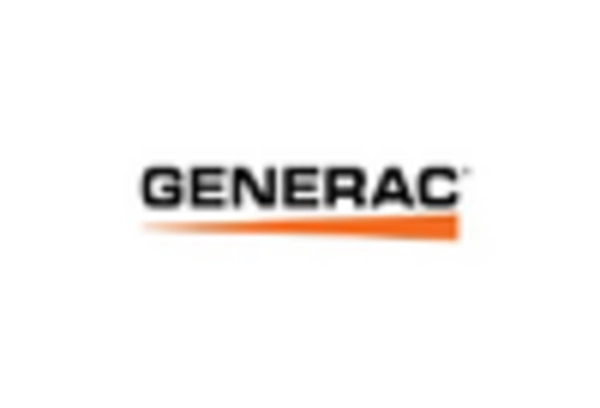The Residential Portable Generator Market is currently characterized by a dynamic competitive landscape, driven by increasing consumer demand for reliable power solutions in residential settings. Key players such as Generac (US), Honda (JP), and Champion Power Equipment (US) are at the forefront, each adopting distinct strategies to enhance their market positioning. Generac (US) has focused on innovation, particularly in developing smart generator technology that integrates seamlessly with home automation systems. Honda (JP), known for its engineering excellence, emphasizes fuel efficiency and compact designs, appealing to environmentally conscious consumers. Meanwhile, Champion Power Equipment (US) has carved a niche by offering a diverse range of affordable generators, targeting budget-sensitive segments. Collectively, these strategies contribute to a competitive environment that is increasingly centered on technological advancement and consumer-centric solutions.
In terms of business tactics, companies are localizing manufacturing to reduce costs and improve supply chain efficiency. This approach is particularly evident in the U.S. market, where manufacturers are increasingly sourcing components domestically to mitigate supply chain disruptions. The competitive structure of the Residential Portable Generator Market appears moderately fragmented, with several players vying for market share. However, the influence of major companies like Generac (US) and Honda (JP) remains substantial, as they set benchmarks for innovation and quality that smaller competitors strive to meet.
In August 2025, Generac (US) announced a strategic partnership with a leading home automation company to enhance its smart generator offerings. This collaboration aims to integrate Generac's generators with advanced home energy management systems, allowing users to monitor and control their power usage remotely. The strategic importance of this partnership lies in its potential to position Generac as a leader in the smart home energy sector, appealing to tech-savvy consumers who prioritize convenience and efficiency.
In September 2025, Honda (JP) unveiled a new line of portable generators that utilize advanced inverter technology, significantly improving fuel efficiency and reducing emissions. This launch reflects Honda's commitment to sustainability and innovation, aligning with global trends towards greener energy solutions. The introduction of these generators is likely to enhance Honda's competitive edge, particularly among environmentally conscious consumers who are increasingly seeking eco-friendly options.
In July 2025, Champion Power Equipment (US) expanded its product line by introducing a series of dual-fuel generators, which can operate on both gasoline and propane. This strategic move not only broadens Champion's market appeal but also addresses consumer preferences for versatility and convenience. The dual-fuel capability is expected to attract a wider customer base, particularly in regions where fuel availability may vary.
As of October 2025, the competitive trends in the Residential Portable Generator Market are increasingly defined by digitalization, sustainability, and the integration of artificial intelligence. Strategic alliances are becoming more prevalent, as companies recognize the value of collaboration in enhancing product offerings and market reach. Looking ahead, competitive differentiation is likely to evolve from traditional price-based competition to a focus on innovation, technological advancements, and supply chain reliability. This shift underscores the importance of adapting to consumer preferences and market demands in a rapidly changing landscape.


















Leave a Comment